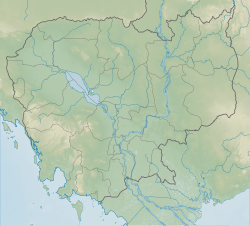| Dong Peng Multiple Use Management Area | |
|---|---|
IUCN category IV (habitat/species management area) | |
| Location | Koh Kong Province, Cambodia |
| Nearest city | Sihanoukville |
| Coordinates | 11°9.131′N103°40.734′E / 11.152183°N 103.678900°E [1] |
| Area | 27,700 ha (107 sq mi) [2] |
| Established | 1993 [2] |
Dong Peng is a protected multiple use management area in the Koh Kong Province of Cambodia. It is located on the north end of the Bay of Kompong Som.
